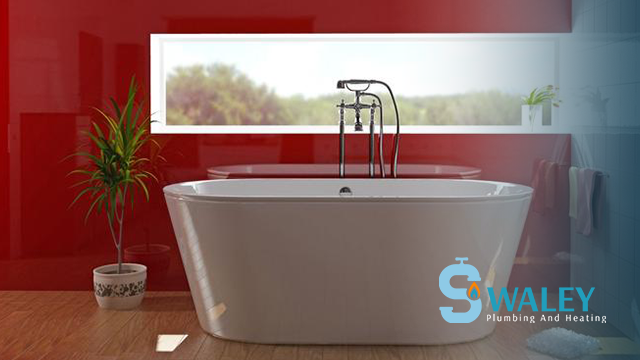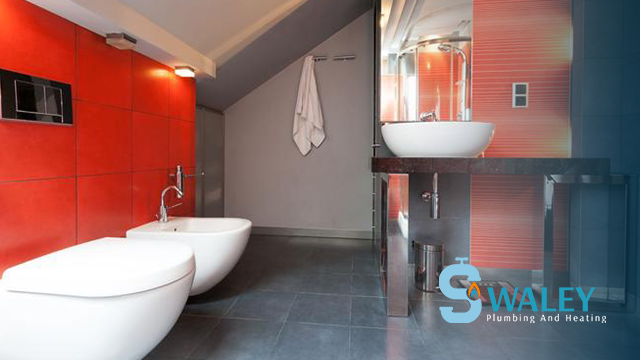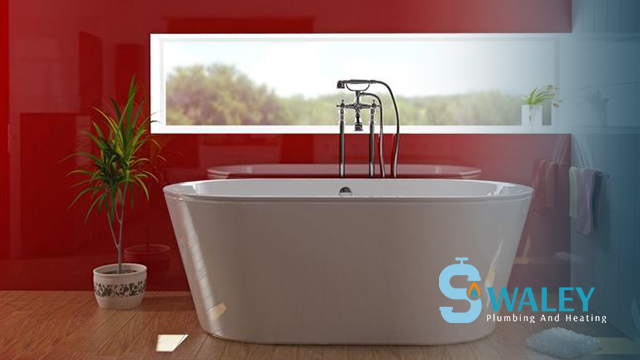Wet Room Installations: Upgrade Your Bathroom with a Modern Touch
Having a stylish and functional bathroom is a key aspect of any home. If you’re looking to enhance your bathroom experience and add a touch of modernity, wet room installations are a fantastic option to consider. In this article, we will explore everything you need to know about wet rooms, from their benefits and considerations to the installation process and design ideas.
Whether you have a spacious bathroom or a compact one, wet rooms can transform your space into a luxurious oasis.
What is a Wet Room?
A wet room is a contemporary bathroom concept where the entire space is waterproofed, creating a seamless and open shower area. Unlike traditional bathrooms with separate shower enclosures, wet rooms offer a spacious and accessible showering experience. With no barriers or doors to hinder movement, wet rooms provide a sleek and modern aesthetic.
Benefits of Wet Room Installations
Wet rooms bring several advantages that make them a popular choice for homeowners:
- Enhanced Accessibility: Wet rooms provide easy access for individuals with mobility challenges or disabilities. The absence of barriers ensures a safe and convenient bathing experience.
- Space Maximisation: Wet rooms utilise the entire bathroom space effectively, making them ideal for small bathrooms. With no need for shower enclosures, wet rooms create an illusion of spaciousness.
- Versatility in Design: Wet rooms offer endless design possibilities. From contemporary and minimalist styles to luxurious and spa-like retreats, you can customise your wet room to suit your preferences.
- Easy Maintenance: The absence of shower enclosures reduces the need for cleaning and maintenance. With fewer nooks and crannies for grime and mould to accumulate, wet rooms are easy to clean and keep hygienic.
Considerations Before Installing a Wet Room
Before diving into a wet room installation project, it’s important to consider a few key factors:
- Floor Structure: Wet rooms require proper floor reinforcement and leveling. Consult with a professional contractor to ensure your bathroom floor can handle the weight and moisture of a wet room.
- Waterproofing and Tanking: To prevent water damage, it’s crucial to waterproof and tank your wet room. Professional installation ensures proper sealing and protection against leaks.
- Drainage Systems: Adequate drainage is essential to keep your wet room functional and water-free. Proper installation of drains and gradients is crucial for efficient water removal.
- Flooring and Wall Materials: Choose waterproof and slip-resistant flooring and wall materials for your wet room. Tiles, vinyl, and concrete are popular choices due to their durability and water resistance.
- Fixtures and Accessories: Consider the fixtures and accessories that will complement your wet room design. Showerheads, taps, and storage solutions should align with your aesthetic and functional needs.
Wet Room Installation Process
A successful wet room installation involves several crucial steps. Let’s take a closer look at each stage:
Assessing Your Bathroom Space
The first step is to assess your bathroom space and determine its suitability for a wet room installation. Consider factors such as the size of your bathroom, existing plumbing, and any structural limitations. Consulting with a professional contractor can help you understand the possibilities and limitations.
Waterproofing and Tanking
To ensure a watertight wet room, proper waterproofing and tanking are crucial. This involves applying a waterproof membrane to the walls and floors of the wet room area. The membrane acts as a protective barrier, preventing water from seeping into the underlying structures.
Drainage Systems
Effective drainage is essential in wet rooms to prevent water accumulation. A professional installer will determine the best drainage system based on your bathroom’s layout and needs. Floor drains or linear drains are commonly used to efficiently remove water from the wet room area.
Flooring and Wall Materials
Selecting the right flooring and wall materials is vital for a functional and visually appealing wet room. Tiles, such as ceramic or porcelain, are popular options due to their water resistance and versatility in design. Non-slip tiles or textured surfaces provide added safety.
Fixtures and Accessories
Choose fixtures and accessories that complement your wet room design while offering convenience and functionality. Opt for high-quality showerheads, faucets, and other fittings that are designed specifically for wet room environments. Consider storage solutions such as recessed shelves or wall-mounted cabinets to keep your wet room organised.
Hiring a Professional Wet Room Installer
When it comes to wet room installations, hiring a professional contractor is highly recommended. They possess the necessary expertise and experience to ensure a successful and durable installation. Here are some important considerations when selecting a wet room installer:
Researching and Selecting a Reliable Contractor
Take the time to research and select a reputable contractor who specialises in wet room installations. Look for certifications, licenses, and accreditations that demonstrate their expertise and professionalism. Check their portfolio and previous projects to gauge the quality of their work.
Requesting Quotes and Comparing Prices
Obtain quotes from multiple contractors to compare prices and services. However, don’t solely base your decision on cost. Consider the contractor’s reputation, experience, and the quality of materials and services they offer. Remember, investing in a reliable and skilled installer ensures a long-lasting wet room.
Checking Licenses and Insurance
Ensure that the contractor holds the necessary licenses and permits required by local building regulations. Additionally, verify if they have liability insurance to protect against any potential damages or accidents that may occur during the installation process.
Reading Customer Reviews and Testimonials
Reading customer reviews and testimonials can provide valuable insights into the contractor’s reliability and customer satisfaction. Look for testimonials from previous clients who had wet room installations and assess their experiences. This will give you an idea of the contractor’s professionalism and ability to meet expectations.
Wet Room Design Ideas
One of the exciting aspects of wet room installations is the opportunity to personalise the design. Here are some popular wet room design ideas to inspire you:
Contemporary and Minimalistic Wet Rooms
If you prefer clean lines and a sleek appearance, a contemporary and minimalistic wet room is an excellent choice. Utilise neutral colours, minimalist fixtures, and seamless surfaces to create a sense of openness and serenity.
Accessible Wet Rooms for Elderly and Disabled
For individuals with mobility challenges, creating an accessible wet room is crucial. Incorporate grab bars, non-slip flooring, and level-access showers to ensure safety and convenience. Consider barrier-free design elements to accommodate wheelchairs and mobility aids.
Luxurious and Spa-like Wet Rooms
Indulge in the ultimate relaxation with a luxurious and spa-like wet room. Install features such as rainfall showerheads, mood lighting, and natural stone tiles to create a serene and rejuvenating atmosphere. Incorporate comfortable seating and create a space for relaxation and self-care.
Stylish and Compact Wet Rooms for Small Spaces
Even with limited space, you can create a stylish and functional wet room. Opt for space-saving fixtures, such as wall-mounted sinks and toilets. Utilise mirrors and clever storage solutions to enhance the illusion of space and maximise storage.
Wet Room Maintenance and Care
Proper maintenance is essential to ensure your wet room remains in pristine condition. Here are some maintenance tips to keep your wet room looking its best:
Cleaning and Preventing Mould and Mildew
Regular cleaning is crucial to prevent the build-up of mould and mildew in your wet room. Use appropriate cleaning products and techniques to remove soap scum, limescale, and other residues.
Proper ventilation and adequate air circulation help in preventing mould and mildew growth.
Proper Ventilation and Air Circulation
Ensure your wet room has adequate ventilation to minimise condensation and excess moisture. Install extractor fans or windows to promote air circulation and reduce the risk of mold growth. Open windows or use dehumidifiers when necessary to maintain optimal humidity levels.
Regular Inspections and Repairs
Periodically inspect your wet room for any signs of leaks, loose tiles, or damaged sealants. Promptly address any issues to prevent further damage. Regular maintenance and repairs will extend the lifespan of your wet room and ensure its continued functionality.
Frequently Asked Questions (FAQs)
Here are some commonly asked questions about wet room installations:
Can a wet room be installed in any bathroom?
In most cases, wet rooms can be installed in any bathroom. However, it’s important to assess the structural integrity and suitability of your bathroom space. Consult with a professional installer to determine the feasibility of a wet room in your specific situation.
Are wet rooms suitable for small bathrooms?
Yes, wet rooms can be an excellent choice for small bathrooms. Their open design and space-saving features can create the illusion of a larger space. Consult with a professional to design a compact wet room that maximises functionality and style.
How long does a wet room installation take?
The duration of a wet room installation depends on various factors, including the complexity of the project and the size of the bathroom. On average, the installation process can take anywhere from a few days to a couple of weeks. A professional installer will provide you with a more accurate timeframe based on your specific requirements.
What are the costs involved in wet room installations?
The costs of wet room installations vary depending on factors such as the size of the bathroom, materials chosen, and additional features. It’s recommended to obtain quotes from multiple contractors to compare prices. Remember to prioritise quality and expertise over cost alone to ensure a successful installation.
Can I convert an existing bathroom into a wet room?
In many cases, existing bathrooms can be converted into wet rooms. However, it’s essential to consider the feasibility and cost implications of such a conversion. Consulting with a professional contractor will provide you with valuable insights into the requirements and possibilities for your specific bathroom.




